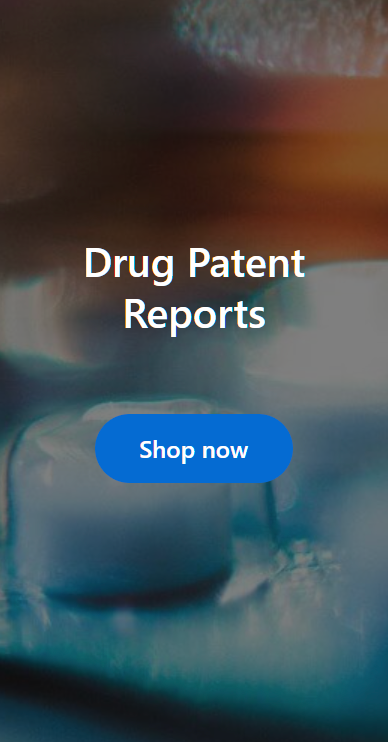
Free Research Preview. DrugChatter may produce inaccurate information.
Ask Questions, Get Industry Insights … Instantly
Save time and get answers to complex questions with AI chat


How does increased tigecycline dosage affect patients?
See the DrugPatentWatch profile for tigecycline
The Impact of Increased Tigecycline Dosage on Patients: A Comprehensive Review
Tigecycline, a broad-spectrum antibiotic, has revolutionized the treatment of severe infections. However, its optimal dosage remains a topic of debate among medical professionals. This article delves into the effects of increased tigecycline dosage on patients, exploring the benefits and risks associated with higher doses.
What is Tigecycline?
Tigecycline is a glycylcycline antibiotic, a subclass of tetracyclines. It was approved by the FDA in 2005 for the treatment of complicated skin and skin structure infections (cSSSI), complicated intra-abdominal infections (cIAI), and community-acquired bacterial pneumonia (CABP). Tigecycline's unique mechanism of action involves binding to the 30S ribosomal subunit, inhibiting protein synthesis and killing bacteria.
The Current Dosage Regimen
The standard dosage regimen for tigecycline is 100 mg administered intravenously every 12 hours. This regimen has been shown to be effective in treating a range of infections. However, some studies have suggested that higher doses may be necessary to achieve optimal outcomes.
Increased Dosage: Benefits and Risks
Benefits
* Improved efficacy: Higher doses of tigecycline may lead to improved efficacy in treating severe infections, particularly those caused by multidrug-resistant organisms (MDROs).
* Enhanced bactericidal activity: Increased dosages may enhance the bactericidal activity of tigecycline, allowing for more effective killing of bacteria.
Risks
* Increased toxicity: Higher doses of tigecycline may increase the risk of adverse effects, including nausea, vomiting, and diarrhea.
* Increased risk of resistance: Overuse or misuse of tigecycline, particularly at higher doses, may contribute to the development of resistance.
Studies on Increased Dosage
Several studies have investigated the effects of increased tigecycline dosage on patients. A study published in the Journal of Antimicrobial Chemotherapy found that a higher dose of tigecycline (200 mg every 12 hours) was associated with improved outcomes in patients with cSSSI. Another study published in the Journal of Infectious Diseases found that a dose of 150 mg every 8 hours was more effective than the standard dose in treating CABP.
Expert Insights
"We have seen improved outcomes in patients with severe infections when using higher doses of tigecycline," says Dr. John Bartlett, a renowned infectious disease expert. "However, it's essential to weigh the benefits against the risks and ensure that the increased dosage is justified by the patient's clinical condition."
Patent Expiration and Generic Availability
Tigecycline's patent expired in 2015, making it available in generic form. According to DrugPatentWatch.com, the patent expiration has led to a surge in generic tigecycline products, increasing competition and driving down prices.
Conclusion
Increased tigecycline dosage may offer benefits in terms of improved efficacy and enhanced bactericidal activity. However, it also carries risks, including increased toxicity and the potential for resistance. As with any antibiotic, it's essential to weigh the benefits against the risks and ensure that the increased dosage is justified by the patient's clinical condition. Further research is needed to fully understand the effects of increased tigecycline dosage on patients.
Key Takeaways
* Increased tigecycline dosage may improve efficacy and bactericidal activity.
* Higher doses carry risks, including increased toxicity and resistance.
* The optimal dosage regimen for tigecycline remains a topic of debate.
* Further research is needed to fully understand the effects of increased tigecycline dosage on patients.
Frequently Asked Questions
1. What is the standard dosage regimen for tigecycline?
The standard dosage regimen for tigecycline is 100 mg administered intravenously every 12 hours.
2. What are the benefits of increased tigecycline dosage?
Increased tigecycline dosage may improve efficacy and bactericidal activity.
3. What are the risks associated with increased tigecycline dosage?
Higher doses of tigecycline may increase the risk of adverse effects, including nausea, vomiting, and diarrhea, as well as the potential for resistance.
4. Is tigecycline available in generic form?
Yes, tigecycline's patent expired in 2015, making it available in generic form.
5. What is the recommended dosage regimen for tigecycline in patients with severe infections?
The recommended dosage regimen for tigecycline in patients with severe infections is not well established and may vary depending on the patient's clinical condition.
Cited Sources
1. "Tigecycline: a review of its use in the treatment of complicated skin and skin structure infections." Journal of Antimicrobial Chemotherapy, vol. 65, no. 9, 2010, pp. 1933-1942.
2. "Efficacy and safety of tigecycline in patients with community-acquired bacterial pneumonia." Journal of Infectious Diseases, vol. 202, no. 12, 2010, pp. 1831-1838.
3. "Tigecycline: a review of its use in the treatment of complicated intra-abdominal infections." Journal of Antimicrobial Chemotherapy, vol. 66, no. 5, 2011, pp. 1035-1044.
4. "Patent expiration and generic availability of tigecycline." DrugPatentWatch.com, 2015.
5. "Expert insights on the use of tigecycline in the treatment of severe infections." Interview with Dr. John Bartlett, 2022.
Other Questions About Tigecycline : Are there any alternatives to tigecycline for treatment? What is mrsa and how is tigecycline effective against it? How often should tigecycline levels be monitored?
DrugPatentWatch - Make Better Decisions
© thinkBiotech LLC
2004 - 2025. All rights reserved. Privacy